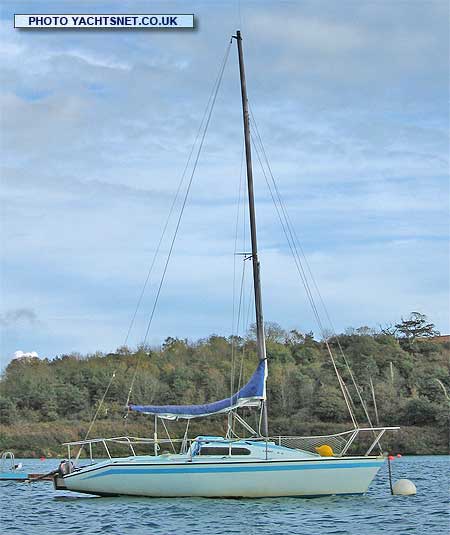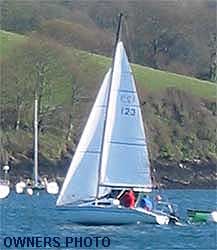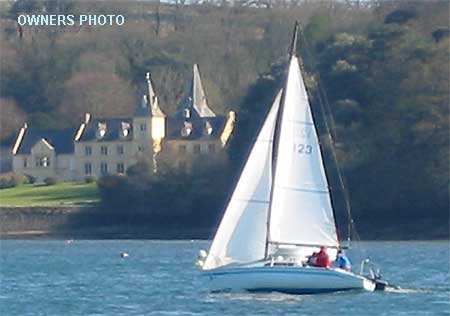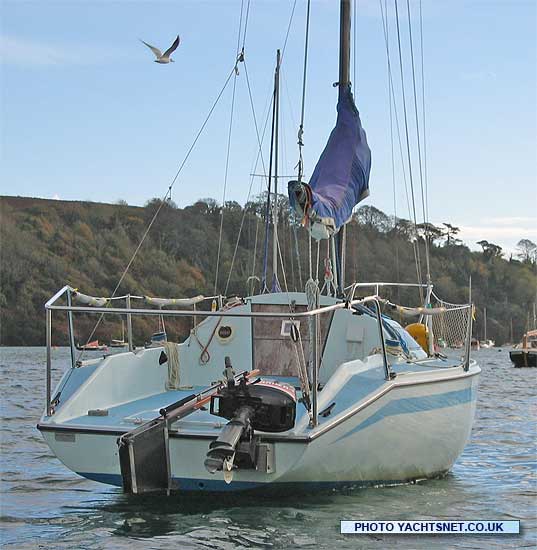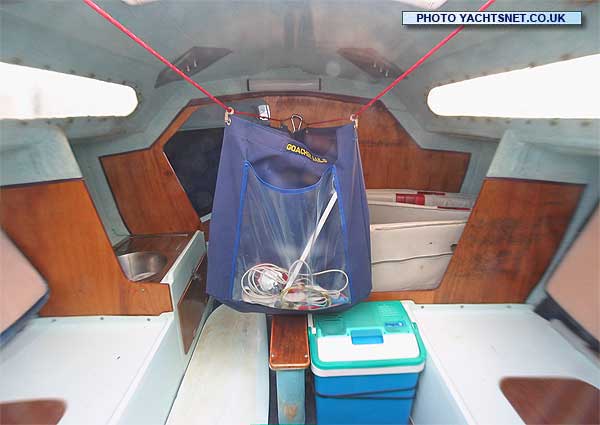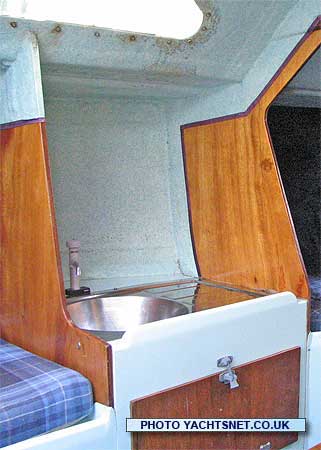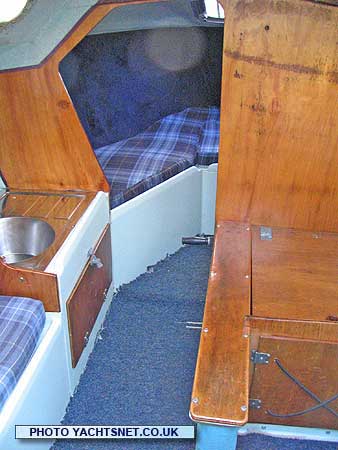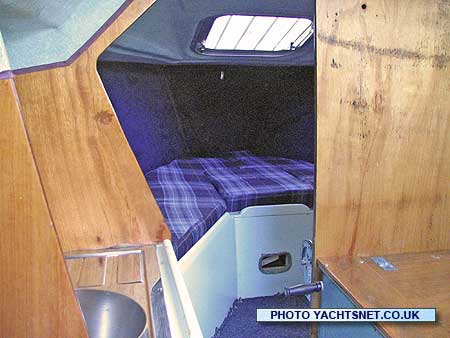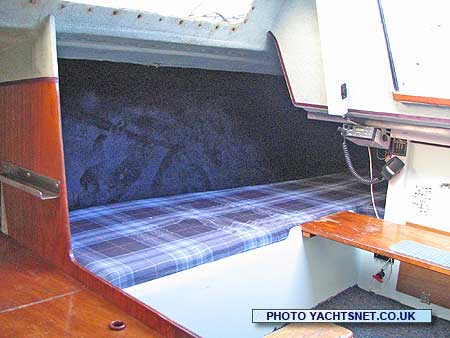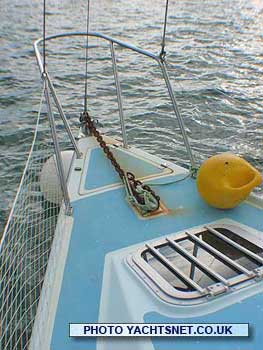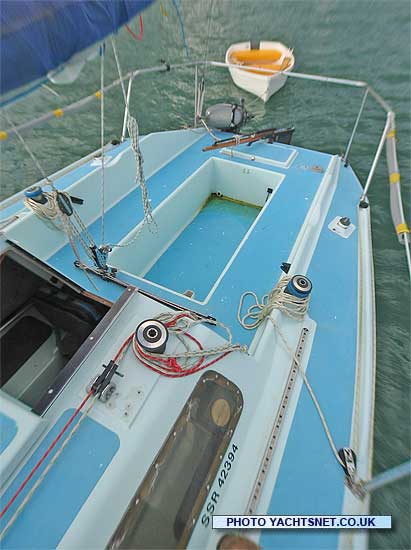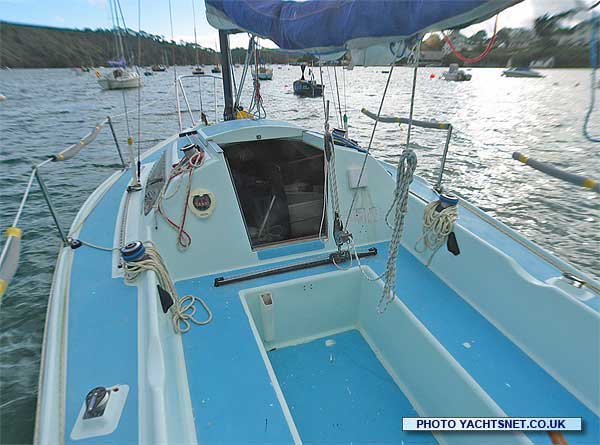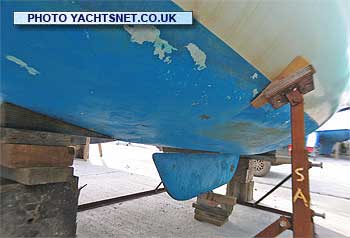| |
|
|
|
|
|
|
|
| © Yachtsnet Ltd. 2000/2024 |
|
|
|
| |
|
|
Yachtsnet's
archive of boat details and pictures
|
| |
The following information and photographs are
displayed as a service to anyone researching yacht types. HOWEVER THE PHOTOGRAPHS AND TEXT ARE COVERED BY COPYRIGHT, AND MAY NOT BE REPRODUCED WITHOUT THE PERMISSION OF YACHTSNET LTD. Details and photographs
are normally based on one specific yacht, but could be a compilation.
No reliance should be placed on other yachts of the same class being
identical. Where common variations exist, we have endeavoured
to indicate this in these archive details. |
Limbo 6.6
|
Brief details |
Builder |
Zygal Boats, Whitstable, Kent |
The Limbo 6.6 was
designed in around 1975 by Andrew Stewart as a small fast coastal
cruiser with potential for competitive racing as a one design 'mini-tonner'.
Whilst most people now use them as club racers, in which role they
are generally rated as faster than GK24s or Sonatas, both two foot
longer, and neither slow boats themselves. A Limbo 6.6 was raced
transatlantic in 1979, and completed the course. The boat illustrated
is a drop keel version. |
LOA |
22' 3" |
Sail area |
239 sq ft
|
LWL |
17' 0" |
Rig |
sloop |
Beam |
8' 2" |
Cabins |
1 |
Draught |
2' 3" to 5' 0" keel down |
Berths |
4 |
Displacement |
1,950 lbs |
Engine |
Mariner outboard |
Ballast |
850 lbs |
BHP |
5 |
Keel type |
Iron drop keel |
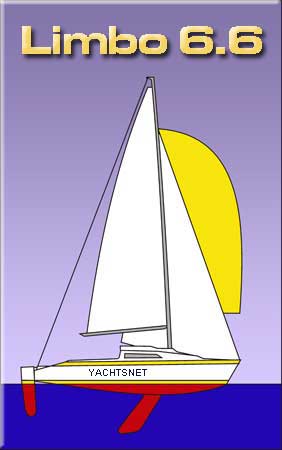
|
Zygal Boats built about 130 Limbo 6.6s between 1975 and
the mid 80s, as well as a smaller number of the larger Limbo
9.9s. The hulls and decks are balsa sandwich GRP, and the
drop keel is an aerofoil section iron casting, raised and
lowered by a wire on a braked winch. An alternative fixed
keel version with 4' 6" draught was also built, though
the drop-keelers seemed to be more popular. The interior is
simply fitted out with four berths and a small galley.
The heavy iron centreboard was designed to be raised as necessary when reaching or running to improve performance, although overall wetted area would not decrease much, frontal area and hence resistance would be reduced, as well as altering the balance and trim. |
|
|
|

